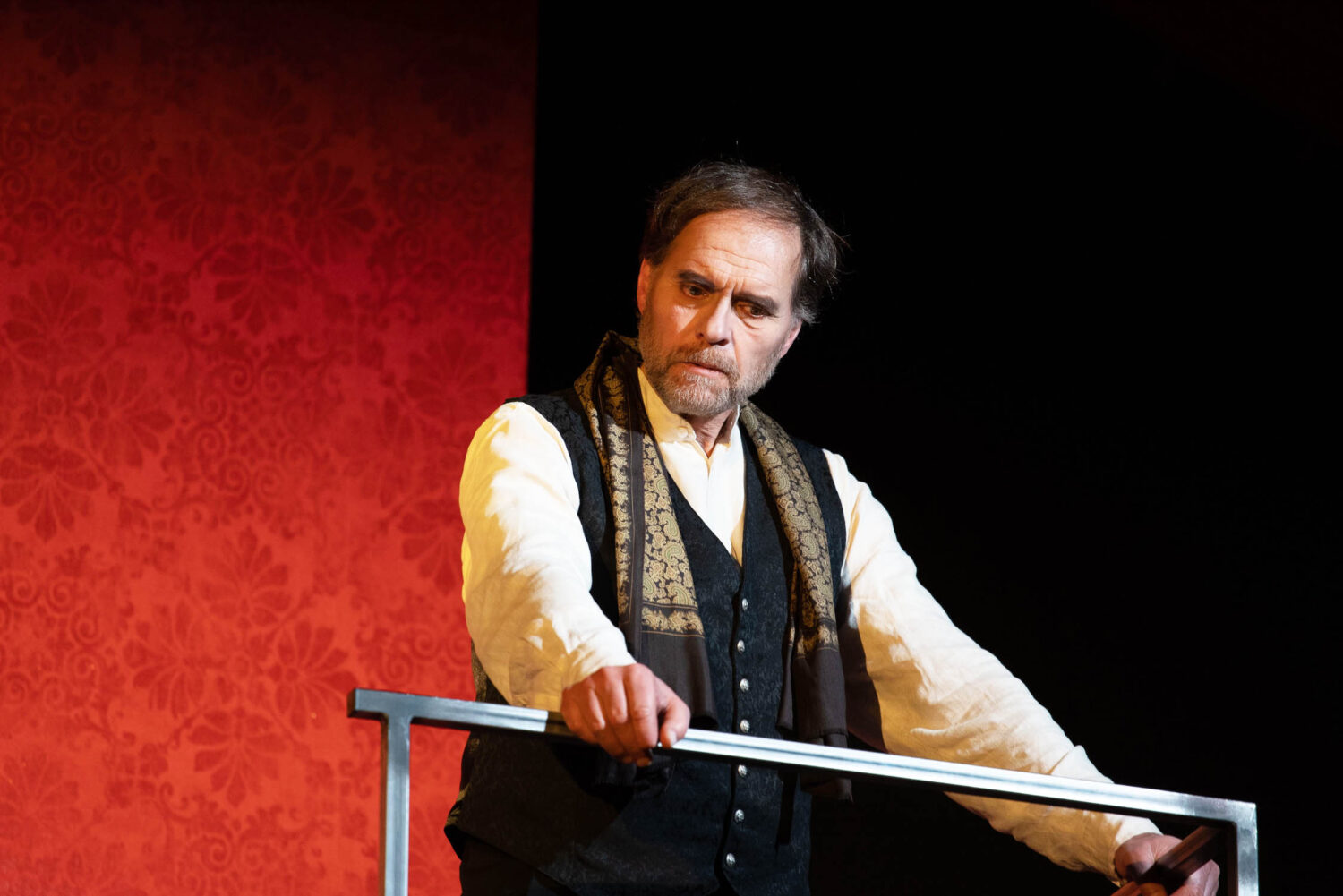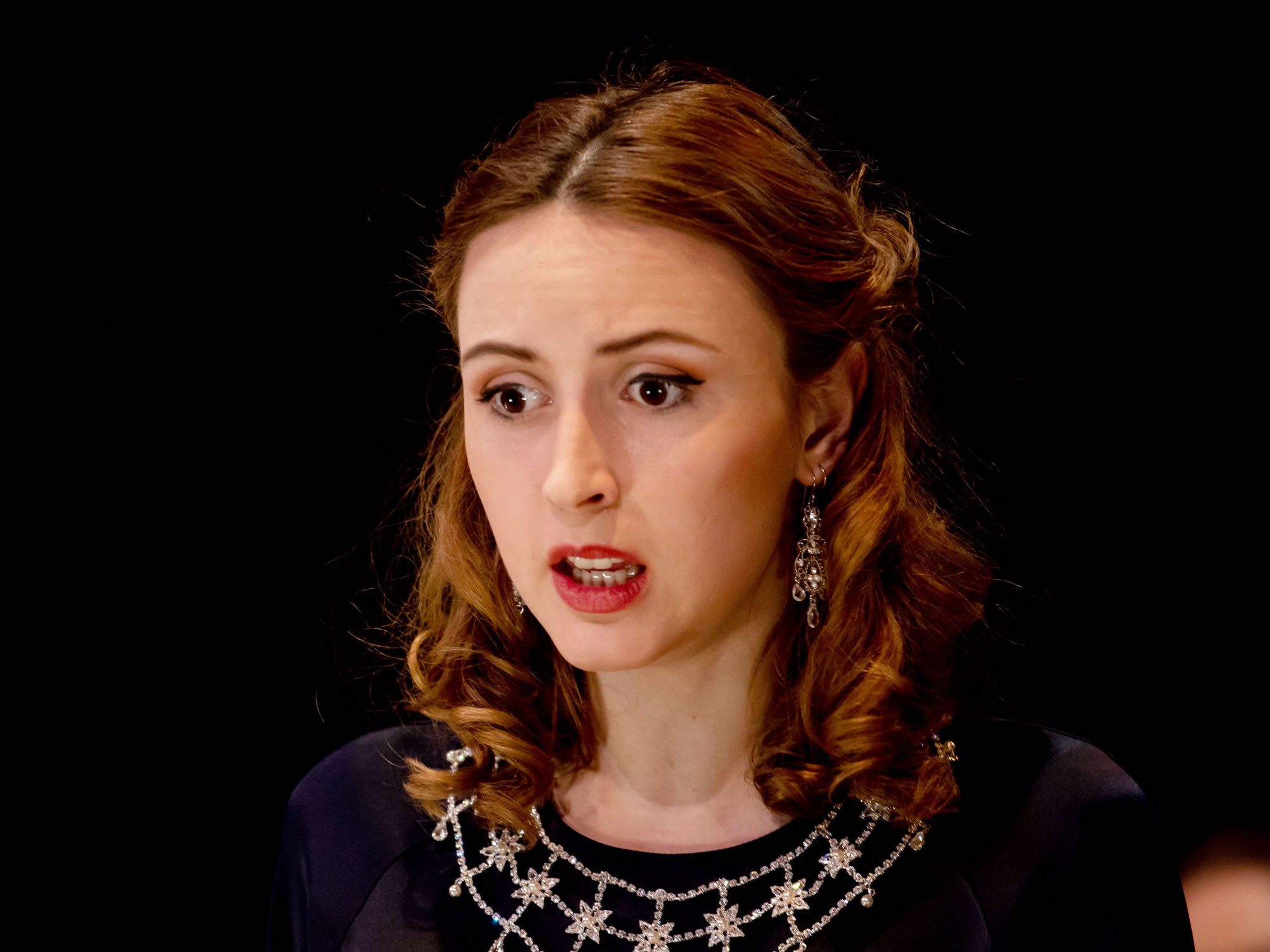King Lear is not an ordinary royal drama but—like Hamlet and Macbeth—a tragedy with archetypal images. Behind these images, historical context disappears.
King Lear is about the relationship fathers have to their children: Lear to his three daughters and the Earl of Gloucester to his two sons. The famous tragedy of King Oedipus does the exact opposite: it is about the relationship the son (Oedipus) has to his father, Laius. Shakespeare focuses on these relationships so intensely that political questions lose their relevance – for example, we do not need to know why the King of France, newly wed to Cordelia, sets off from Dover to conquer England.
The Brothers Grimm folktale “The Goose-Girl at the Well” is also about the relationship of a father to his three daughters. As in Shakespeare’s tragedy, the king in this folktale divides his kingdom among his three daughters. The first two daughters respond to him similarly to Lear’s daughters Goneril and Regan: the first loves her father “as dearly as the sweetest sugar,” the second “as dearly as my prettiest dress”. Like Cordelia, the third remains silent at first. She “cannot compare her love with anything,” but the father insists that she answers his question. At last she says “The best food does not please me without salt. Therefore, I love my father like salt.” The King, who, like his daughters, is nameless in the story, orders that a sack of salt be bound to his youngest daughter’s back and that two servants take her “into the wild forest.” “We all begged and prayed for her,” the Queen laments, “but the King’s anger was not to be appeased. How she cried when she had to leave us! The road was strewn with the pearls that flowed from her eyes,” for when the youngest daughter cried, “not tears fell from her eyes but only pearls and precious stones.” Three years later, the trail of these very special tears leads to the redemption of the cast-out daughter and to reconciliation with her father.
Unlike in the Grimms’ tale, the archetypes in Shakespeare’s story are mixed with historical references. Folktale becomes tragedy. This also explains why the story touches us so deeply; we can hardly bear the ending, when nearly all characters lie dead before us, murdered or deceased. The audience sits, almost crushed, before the applause begins. And yet, by facing the tragedy, we are able to turn to everyday life again, refreshed, and cleansed by a truly Shakespearean catharsis.

About the Production
Bringing players of the Junge Bühne (young stage) and professional actors together worked astonishingly well. To the audience, the ensemble appeared to be harmoniously grown. The young people of the Junge Bühne had clearly been taught well. That does not mean however, that they would not consider, or might have even started, drama school.
Klaus Suppan’s light design cleverly enhanced the effect of the performance. For example, when Gloucester, intent on ending his life, allegedly jumps off the cliff in Dover in the dark, the light comes on suddenly at the moment of his “fall”—which is a fake, harmless fall because his son Edgar, who has travelled with him in disguise, tries to prevent his father’s suicide.
After Gloucester was blinded by Regan’s husband, the violent Earl of Cornwall, his eyes are opened. He realizes that he has fallen victim to his illegitimate son Edward’s scheming and that he has wrongfully disowned his legitimate son Edgar. Gloucester, in trying to prevent the king from casting out his favorite daughter Cordelia, tragically fails to realize that he is as wrong as Lear, in casting out his own favorite child, Edgar. Thorsten Blanke is convincing as the blinded Gloucester.
The stage design (Nils Frischknecht/Klaus Suppan), which remains the same for all scenes, is ingeniously conceived and can be played in the most varied ways. An unexpected and particularly successful aspect of the production (Director: Andrea Pfaehler) was that, due to the way the chairs were set up, the audience was directly involved in the tragedy. It was a rewarding and truly special production.
Image King Lear at the Goetheanum, 2023. Photo: François Croissant
Translation Margot Saar





